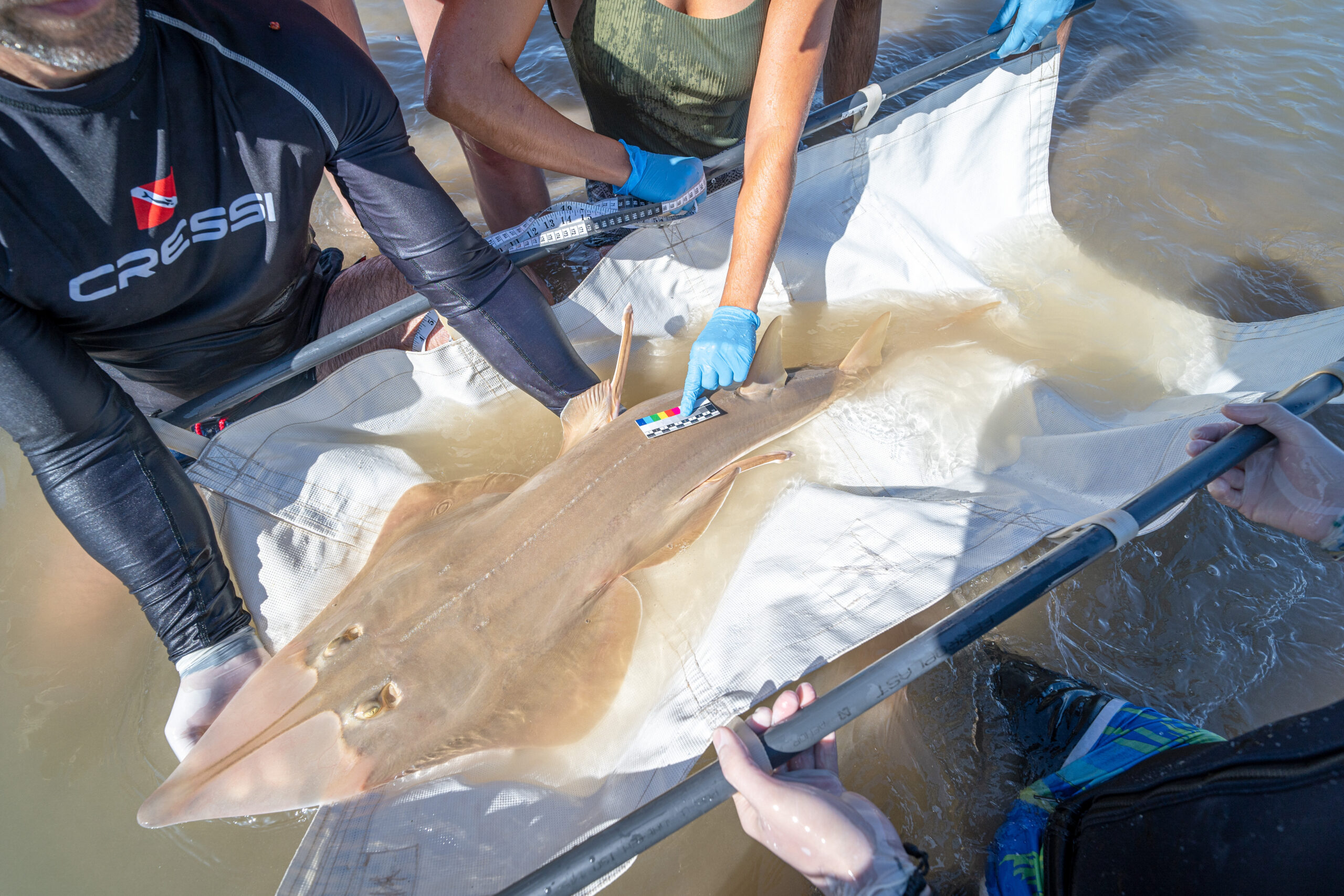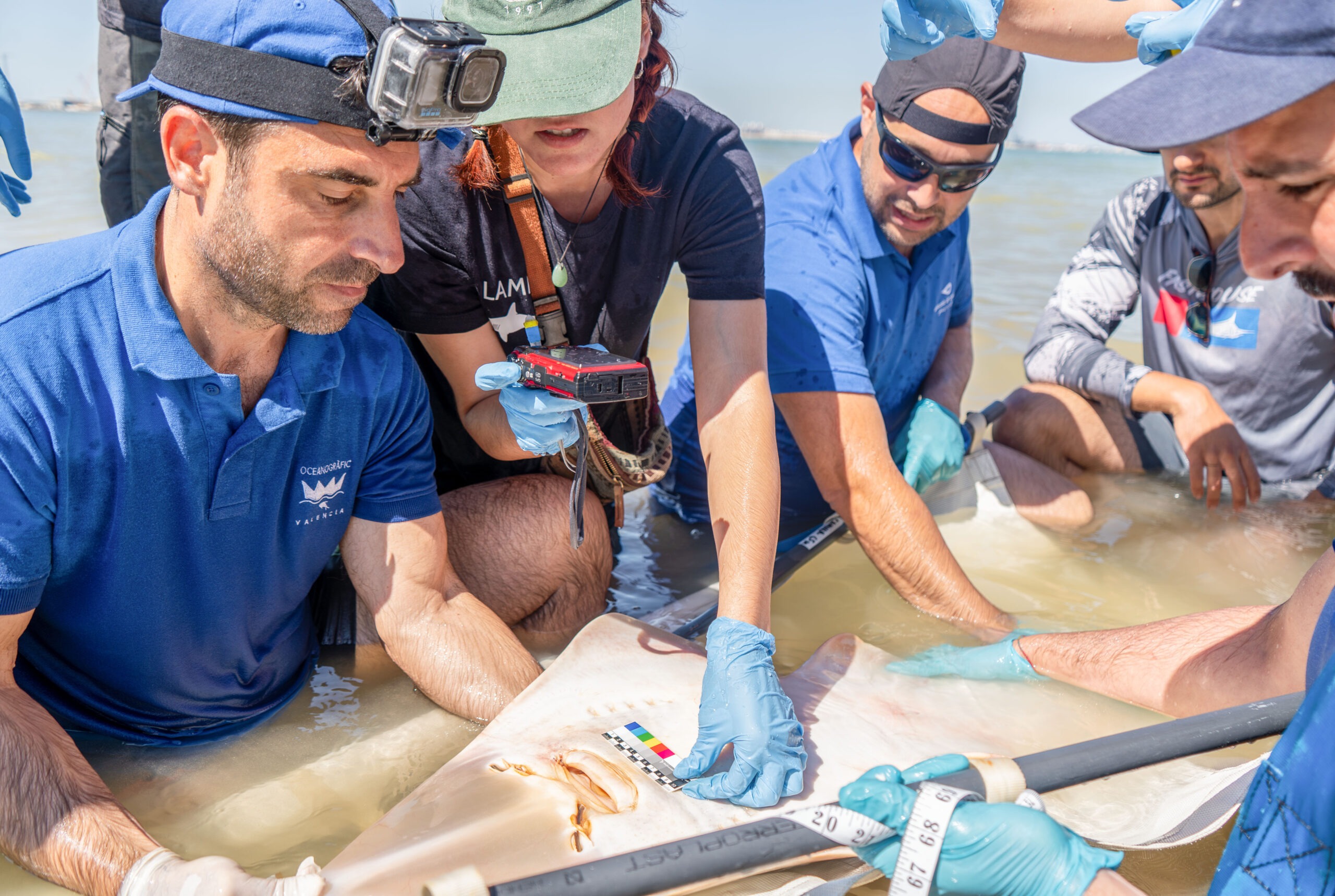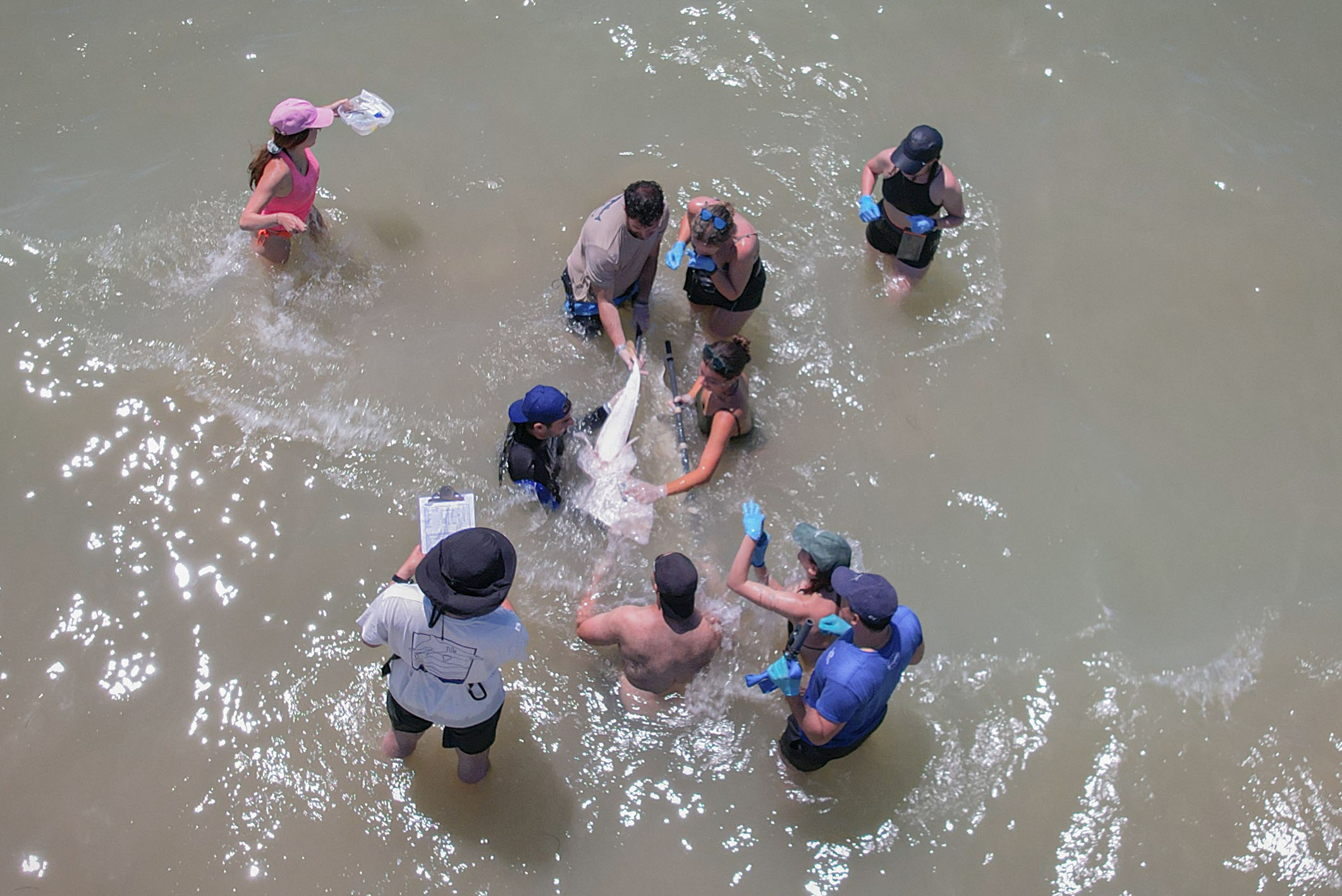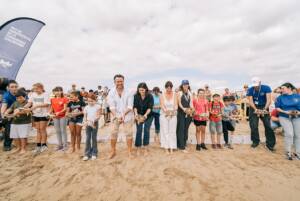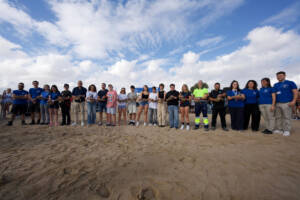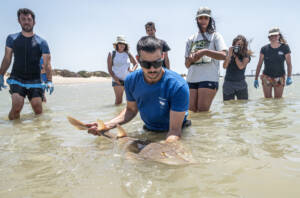Back to all news
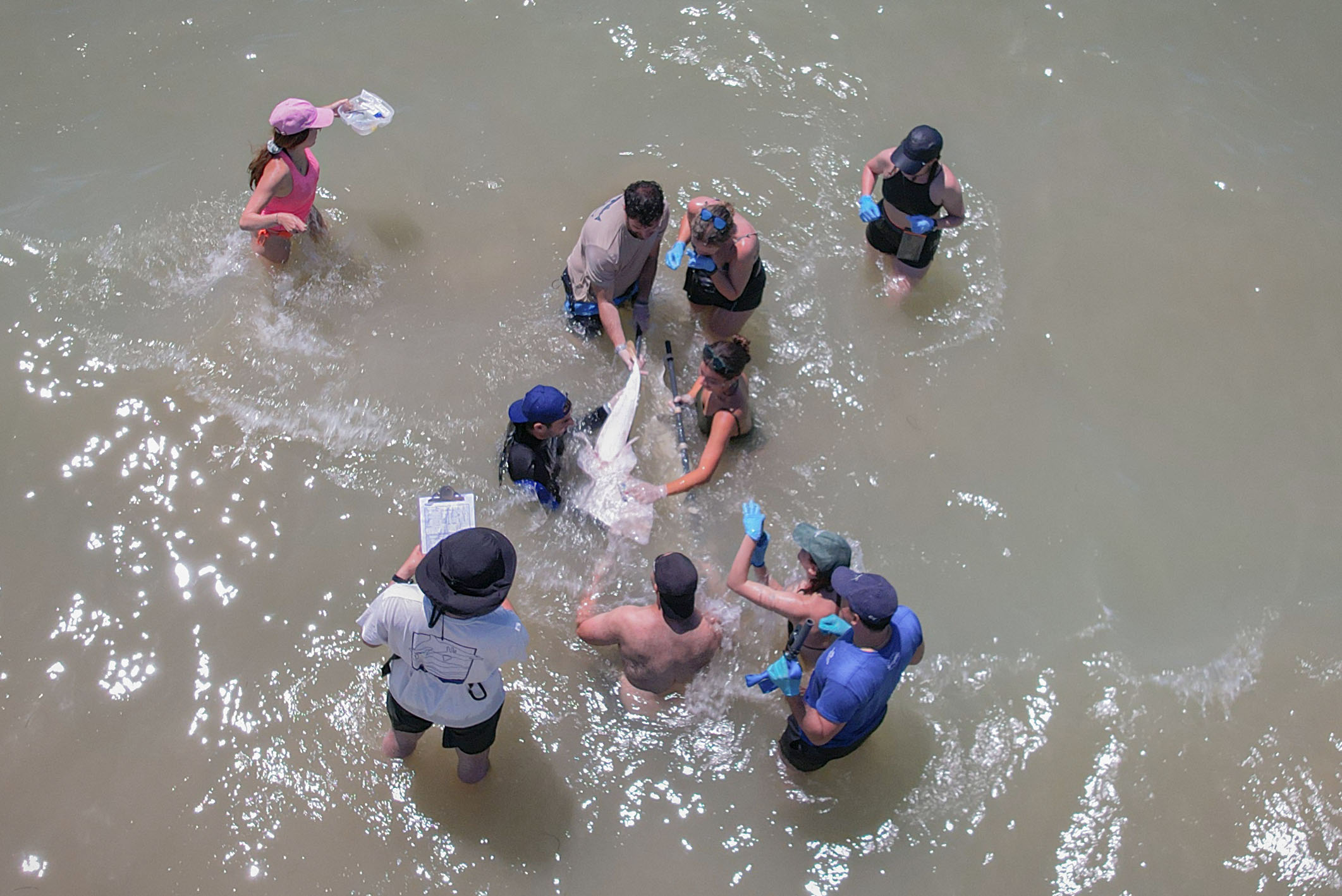
The Giant Guitarfish Survives on the Andalusian Coast Thanks to Citizen Collaboration
18 de June de 2025

- Fundación Oceanogràfic, Fundación Azul Marino, Acuario de Sevilla, and Associació LAMNA, along with other entities, coordinate the Glaucostegus Project, an initiative to save the last European population of this species, which is listed as Critically Endangered.
- Since 2018, recreational fishermen have provided images and data that have confirmed the reproduction of the guitarfish and detected cases of poaching on the Andalusian coast.
The coasts of Cádiz and Huelva are the last places in Europe where a stable population of giant guitarfish or guitarrón (Glaucostegus cemiculus) can be found, a species of cartilaginous ray related to sharks and listed as Critically Endangered by the International Union for Conservation of Nature (IUCN).
In recent years, the species has disappeared from much of the European coast due to multiple threats such as incidental fishing, habitat loss, and human pressure. The Glaucostegus Project, the first initiative to study these animals in their natural environment in Europe, was created to reverse this situation.
The research, led by Dr. Jaime Penadés, aims to generate scientific knowledge about the biology, ecology, and threats to the guitarfish in its habitat.
“With this study, we will be able to obtain information on the status of this species on the Andalusian coast, its reproduction, habitat use, and threats, vital information to improve its protection at the national and global level,” explains Penadés.
The value of citizen science
The Glaucostegus Project is an initiative coordinated by the Fundación Oceanogràfic, the Fundación Azul Marino, the Acuario de Sevilla, and the Associació LAMNA, with the permits and support of MITECO, the Junta de Andalucía, and the Estación Biológica de Doñana. IFAPA, the University of Cádiz, the Oceanário de Lisboa, Zoomarine Algarve, Seashore Environment & Fauna, as well as the Asociación Los Corrales de Rota and numerous recreational fishermen in the area, also collaborate.
The participation of these recreational fishermen is a fundamental part of the project. Since 2018, Ángel Benítez, founder of the Glaucostegus Project, began collecting data on accidental catches thanks to their collaborations. Today, these data exceed 80 confirmed sightings of a species for which there were hardly any recent records.
The fishermen collaborate by sending a photo or video showing the specimen, as well as providing data such as date, time, place of capture, and type of bait. This citizen participation has been essential to confirm reproduction in the area—with newborns sighted—and to detect cases of poaching, one of the latent threats to the species.
Scientific sampling campaigns
In parallel with the collection of citizen data, the first scientific sampling campaign of 2025 was carried out at the end of May. More than 40 researchers traveled to Valdelagrana Beach, in the Bay of Cádiz. During this campaign, 33 guitarfish specimens were handled, both juveniles and adults.
These scientific samplings are carried out under MITECO permits and follow a specific protocol for the species that reduces handling times. Thanks to these efforts, information is obtained about the species in the area, such as the size of the specimens, sex, DNA samples, blood samples, and other biological variables that allow evaluating their health status.
A hope for the species
The knowledge generated by the Glaucostegus Project opens the door to new conservation strategies. Among them, the comparative genetic study of the specimens maintained in the zoological collections of four of the main aquariums of the Iberian Peninsula.
This approach will allow assessing the viability of an ex situ breeding plan for the species, with a view to a possible future reintroduction in areas considered safe.
“Within the framework of the Decade of the Oceans declared by the UN and facing the challenge of restoring Nature in Europe, the guitarfish is a symbol of all that remains to be done, an opportunity to act before it is too late for this and many other species. By working collaboratively, we can significantly increase the impact we have towards the conservation of the marine environment,” concludes Jaime Penadés.

